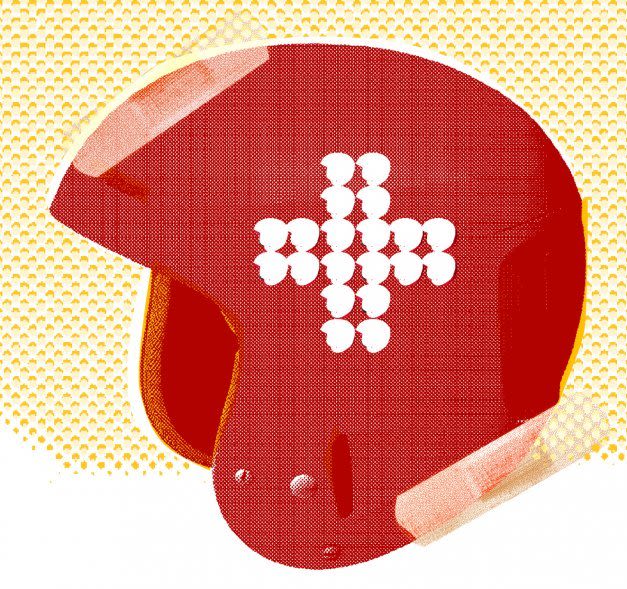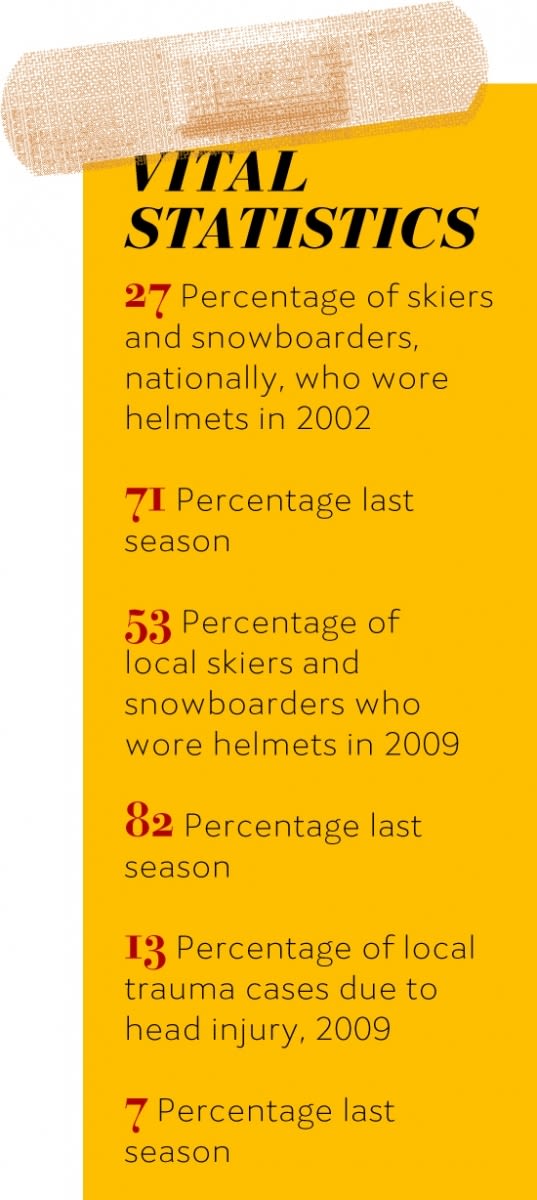Head Med

To underscore the importance of wearing head protection while skiing and snowboarding, Kim Greene, director of Vail’s branch of ThinkFirst, used to bring a string of mangled helmets with her when making presentations at local schools. As a key component of the national head-injury prevention organization’s educational outreach efforts, Greene’s message, punctuated with props, left an impression every bit as visceral as a MADD crashed-car exhibit.
“Those helmets were always from someone who had walked away or gone home that day,” Greene says. “It’s like, ‘Check out their helmet—it’s trashed, but they went home.’”
Thanks to advocates like Greene, and the example of ski companies like Vail Resorts (which distributes 6,500 helmets to its employees each season and requires all on-mountain personnel to don helmets while skiing or operating snowmobiles), both nationally and locally, the percentage of skiers and snowboarders wearing helmets is at an all-time high, bringing great benefits to brains everywhere.
“Helmet use among our trauma patients was 53 percent in 2009; last year, in 2013, it was 82 percent,” says Dana Knerl, trauma coordinator at Vail Valley Medical Center, “There are a lot of other factors that can come into play, but we have seen a trend downward in head injuries and an upward trend in helmet use.”

Knerl points out that the other factors include low or high levels of snowfall and the number of skiers on the mountain in any given season. But still, the numbers don’t lie. Since 2009, the number of head injury patients at VVMC’s ER has fallen by more than 50 percent. Although it can be very difficult to prove that any particular accident resulting in a serious head injury or death could have been prevented if the victim had worn a helmet, based on anecdotal evidence the overwhelming expert opinion is that when skiing or snowboarding, you can’t go wrong by protecting your noggin.
“We can’t study helmet use versus non-use the way we generally conduct scientific studies—it’s not like the crash-test dummies that are evidence of what can happen without a seatbelt,” explains VVMC trauma surgeon Barry Hammaker. “But whenever someone has had some kind of traumatic event on the mountain, everybody—patient, family, health care provider—believes the helmet was beneficial.”
Or would have been beneficial.
Local Brian Haygood actually owned a helmet but left it in his car one morning in 2001 when he went snowboarding in Lake Tahoe with his friends. He miscalculated a jump, banged his head on a tree, and suffered a traumatic brain injury. After an operation to relieve swelling on his brain, Haygood spent nine days in a coma followed by months of intense therapy to regain his strength and motor skills. Today, he still suffers from visual impairments and mental haziness, but he insists he would be exactly the same person he was twelve years ago if he hadn’t left his helmet behind on that fateful day.
“I truly believe things would have been 100 percent different,” he says. “I wore helmets at that time; I was just not wearing it that day. You always have to wear it and be prepared.”






































